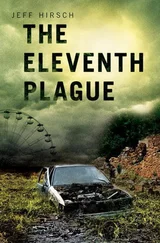Anthony Summers - The Eleventh Day
Здесь есть возможность читать онлайн «Anthony Summers - The Eleventh Day» весь текст электронной книги совершенно бесплатно (целиком полную версию без сокращений). В некоторых случаях можно слушать аудио, скачать через торрент в формате fb2 и присутствует краткое содержание. Жанр: Старинная литература, на английском языке. Описание произведения, (предисловие) а так же отзывы посетителей доступны на портале библиотеки ЛибКат.
- Название:The Eleventh Day
- Автор:
- Жанр:
- Год:неизвестен
- ISBN:нет данных
- Рейтинг книги:3 / 5. Голосов: 1
-
Избранное:Добавить в избранное
- Отзывы:
-
Ваша оценка:
- 60
- 1
- 2
- 3
- 4
- 5
The Eleventh Day: краткое содержание, описание и аннотация
Предлагаем к чтению аннотацию, описание, краткое содержание или предисловие (зависит от того, что написал сам автор книги «The Eleventh Day»). Если вы не нашли необходимую информацию о книге — напишите в комментариях, мы постараемся отыскать её.
The Eleventh Day — читать онлайн бесплатно полную книгу (весь текст) целиком
Ниже представлен текст книги, разбитый по страницам. Система сохранения места последней прочитанной страницы, позволяет с удобством читать онлайн бесплатно книгу «The Eleventh Day», без необходимости каждый раз заново искать на чём Вы остановились. Поставьте закладку, и сможете в любой момент перейти на страницу, на которой закончили чтение.
Интервал:
Закладка:
The man in Seat 9B had perhaps tried to intervene and fight the hijackers. He was Daniel Lewin, an American-Israeli who had served in a crack Israeli commando unit. Lewin spoke Arabic, and may have understood before anyone else what the hijackers intended. Ong said the passenger in Seat 10B, directly to his rear, had stabbed Lewin to death. The man in 10B was one of the five young Arabs who had boarded that morning. The killer and another hijacker, Ong said, had gotten into the cockpit. The sound of “loud arguing” had been heard.
Four minutes into the call, Ong’s colleague Amy Sweeney began trying to phone American Airlines back at the airport in Boston. At 8:32, using a borrowed calling card, she began speaking with duty manager Michael Woodward.
Sweeney, who also reported the stabbings, said the hijackers had “boxes connected with red and yellow wire”—a bomb, she thought. One, she said, spoke good English. So far, passengers in Coach seemed unaware of what was going on.
If the cockpit door had been locked, as required by FAA rules, how had the hijackers gotten in? All American flight attendants held keys, and that was almost certainly why the attendants in First Class—Martin and Arestegui—had been attacked.
There is no knowing exactly what happened when the hijackers erupted into the cockpit. “There was no warning to be more vigilant,” Captain Ogonowski’s wife, Peg, would later say. “These people come in behind him. He’s sitting low, forward, strapped in—the same with his copilot. No warning …”
Ogonowski and copilot Tom McGuinness had been trained not to respond to force with force. FAA policy was still geared to hijackings designed to take over airliners, not destroy them. It called for pilots to “refrain from trying to overpower or negotiate with hijackers, to land the aircraft as soon as possible, to communicate with authorities, and to try delaying tactics.” According to an FAA security report, the agency did know that “suicide was an increasingly common tactic among terrorists in the Middle East.” Its brief to its pilots, however, offered no guidance on how to deal with hijackers bent on suicide.
Attendant Ong had not sounded panicky as she reported from Flight 11. From time to time, though, she asked staff on the ground to “Please pray for us.” There were moments, she said, when the plane was being flown erratically, “sideways.” It was descending. The phone line had started to fade in and out. Her colleague Amy Sweeney said she could see they were now “over New York City.”
Then Ong exclaimed, “Oh, God! … Oh, God! …” and began to cry. Sweeney screamed and said, “Something is wrong. I don’t think the captain is in control. We are in a rapid descent … We are all over the place … I see water! I see buildings! …” Next, a deep breath and, slowly, calmly, “Oh, my God! … We are flying low. We are flying very, very low. We are flying way too low.” Seconds later, again, “Oh, my God, we are way too low …”
American Airlines’ people on the ground could no longer hear either flight attendant. In Boston, duty manager Woodward got only “very, very loud static.” In North Carolina, Gonzalez was saying, “Betty, talk to me. Betty, are you there, Betty? …”
And finally, “I think we may have lost her.”
TWO
IT WAS JUST OVER HALF AN HOUR SINCE THE HIJACKERS HAD STRUCK.
In an office in Lower Manhattan, high in the North Tower of the World Trade Center, a data processor glanced up from his computer. On the horizon to the north, a dot in the sky got his attention. Unusual to see a plane over there, he thought, and turned back to his work.
Moments later, from his perch on a structure on East 77th Street, a steelworker was startled by the sight and the roar of an airliner flying so low that—it seemed to him—it almost hit the antenna atop the Empire State Building. At Madison Avenue and 45th Street, construction workers stared in astonishment. In SoHo, twenty blocks north of the Trade Center, a composer seated in a restaurant window heard a jet thunder overhead. Pigeons, normally blasé, rose in alarm. A window-gazing student at Stuyvesant High—on the banks of the Hudson River—glimpsed the plane for a second and blurted a stunned, “Did you see that?”
A “freakish noise” sent author-photographer Lew Rubenfien rushing onto the roof of his apartment building.
It was the sound jet engines make on a runway when they have been powered all the way up for takeoff—though much more violent, somehow enraged.… The plane was moving far faster than you ever saw one go so low in the sky.… I began to shout telepathically, “Get away from the building, get away from the building.” … The plane made a perfect bull’s-eye, leaving a jagged tear … and then, just as it happens in dreams, everything stretched a long way out.… There could only have been a fraction of a second.… Then, at last, the building exploded. Hot and orange, the great gassy flower blew out.
It was 8:46 A.M.
The impact had been caught on film thanks to the snap reaction of French documentary maker Jules Naudet, filming nearby with a unit of the New York Fire Department. “I look up, and it’s clearly an American Airlines jet,” the Frenchman said later. “I turned the camera toward where it was going to go … I see it go in. I’m filming it.” The image he shot, destined to become iconic, precisely matches Rubenfien’s verbal description—orange burst at the core, great bloom of gray smoke or vapor to the left.
In the North Tower, the man who had seen the plane as a distant dot had not been looking when it came right at him. To Chuck Allen of Lava Trading, busy in his 83rd floor office, the memory instead would be of a “muffled, sucking, unbearably loud noise. Like the sound of two high-speed trains crossing in high proximity to each other.”
Through the windows, still unbroken, he saw debris falling, paper floating. Liquid was running down the windowpanes. There was a grinding and squeaking in the walls and—Allen was vividly conscious of it—the entire building leaned to one side. Then, gradually, it righted itself.
On the 86th floor, the windows had shattered. James Gartenberg, a broker with Julian Studley real estate, reported by phone that the glass had blown “from the inside of the building out.” And that: “The core of the building, the interior core part of the building, collapsed.”
American Flight 11 had sliced into the tower between the 93rd and 99th floors. The liquid Allen saw on the windows was almost certainly jet fuel from the plane’s wing tanks, a dribble of the ten thousand gallons said to have been on board.
Filmmaker Naudet, far below, stayed with the crew of firefighters as it switched from exercise mode to rapid response and rushed to the tower. Minutes later, in the downstairs lobby, he saw what exploding aviation fuel can do. Fireballs had shot down some of the many elevator shafts, detonating on several floors and then in the lobby. “The windows had all been blown out,” Naudet said. “The marble had come off the walls. I saw two bodies burning on the floor. One was screaming, a woman’s scream … I just didn’t want to film that.”
Some fourteen thousand people worked each day in the Trade Center towers. Its Twin Towers—North and South, each 110 stories high—loomed more than a fifth of a mile over Manhattan. They were the tallest buildings in the city of skyscrapers, symbols of America’s financial power, the heart of a great complex that housed offices, a shopping mall, a hotel, and two subway stations. Vast numbers of workers had not yet been at work when Flight 11 hit. They had been milling around on the lower levels, buying newspapers, grabbing a coffee or a snack. It was primary election day in the city, moreover, and many had stopped to vote before going to the office. Some commuters had been delayed, too, by especially heavy traffic through the tunnels in Manhattan. Innumerable lives were saved that morning by being late.
Читать дальшеИнтервал:
Закладка:
Похожие книги на «The Eleventh Day»
Представляем Вашему вниманию похожие книги на «The Eleventh Day» списком для выбора. Мы отобрали схожую по названию и смыслу литературу в надежде предоставить читателям больше вариантов отыскать новые, интересные, ещё непрочитанные произведения.
Обсуждение, отзывы о книге «The Eleventh Day» и просто собственные мнения читателей. Оставьте ваши комментарии, напишите, что Вы думаете о произведении, его смысле или главных героях. Укажите что конкретно понравилось, а что нет, и почему Вы так считаете.











